Is Jarrah honey as good as Manuka honey? Is Manuka honey better than Jarrah? What is the difference between Manuka and Jarrah? Here we explain the science behind the two honeys, and provide our explanation for the conclusion.
Jarrah honey and Manuka honey are different kinds of honey, however both (when high quality) can be classified as medicinal. Jarrah honey is produced from the nectar of Jarrah trees (Eucalyptus marginata) which can only be found in Western Australia, whereas Manuka honey comes from the Manuka bush (Leptospermum scoparium) which can be found in New Zealand and Australia.
Manuka honey derives its main medicinal property from a higher than normal concentration of Methylglyoxal (MGO) a phytochemical produced by the Manuka bush which gives non-peroxide activity (NPA). The Activity of Manuka is rated by either an MGO value (which can range from 50 to over 500) or the Unique Manuka Factor (UMF), which is a proprietary value for the NPA, and typically ranges from 5 to 15 (and rarely up to 25), The presence of MGO results in a strong, often bitter and earthy flavour.
Because the MGO is derived from the Manuka bush, the higher the value (or UMF), the higher the quality of the honey.
Jarrah honey has a larger range of beneficial properties, plus a much stronger Activity. The strong beneficial properties (other than the Activity) result from the very unique composition of the honey, and include very low GI (for honey), strong prebiotic power, resistance to crystallisation, and many phytochemicals that have antioxidant and anti-inflammatory properties. It is the strength of these properties that determines the quality of the Jarrah honey, and these are measured by Forest Fresh by our proprietary Jarrah Factor (JF). Learn more about JF on our FAQ page here.
The very strong antimicrobial power in Jarrah honey is mostly Peroxide Activity (PA), the honey preservation process developed by bees over many millions of years of evolution. The PA results from residual glucose oxidase, an enzyme placed in the nectar by the bees to preserve it during conversion to honey via chemical reactions and dehydration. In most honeys, the residual PA is very low, but for reasons unknown it is very high in many WA honeys, including Jarrah.
The antimicrobial power of Jarrah honey is rated by the Total Activity (TA) value, which is the sum of the NPA and PA. Therefore, the TA value of Jarrah honey is equivalent to the UMF value for Manuka. The conversion of TA/NPA/UMF to MGO is not linear. For example, TA15 is about MGO500 (most Manuka is less that this value), TA25 is about MGO1200 (>99% of Manuka is less than this value); whereas Jarrah with TA35 is equivalent to MGO2100, and TA50 is equivalent to MGO4000.
Because the Activity in Jarrah is PA derived from the bee enzyme glucose oxidase, the TA has no relationship at all to the quality of the Jarrah honey. The quality can only be measured by the composition, and Forest Fresh do this by our proprietary Jarrah Factor.
In conclusion, although both honeys contain incredible properties, Jarrah honey offers a wider range of benefits. Plus, typically for a much lower price.
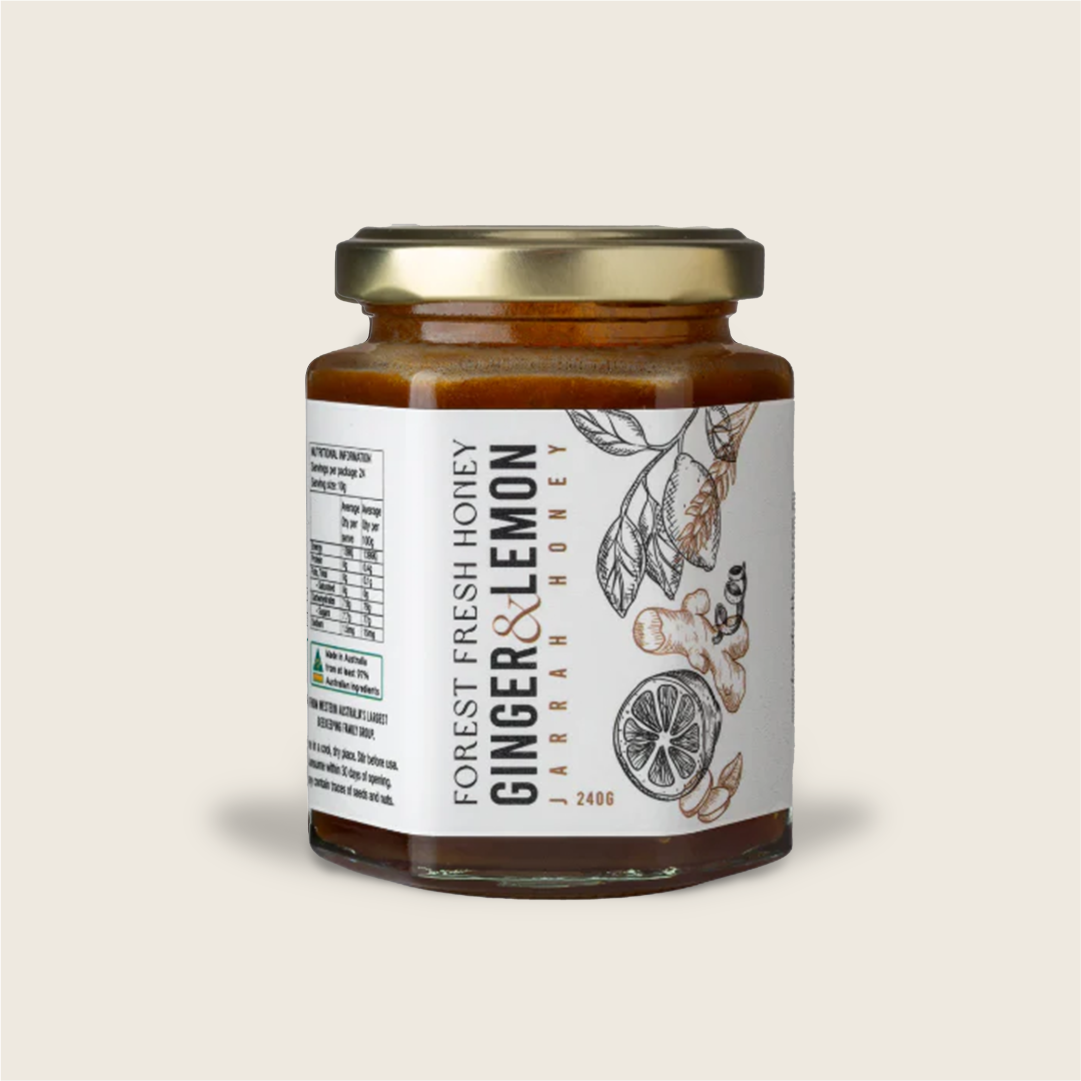
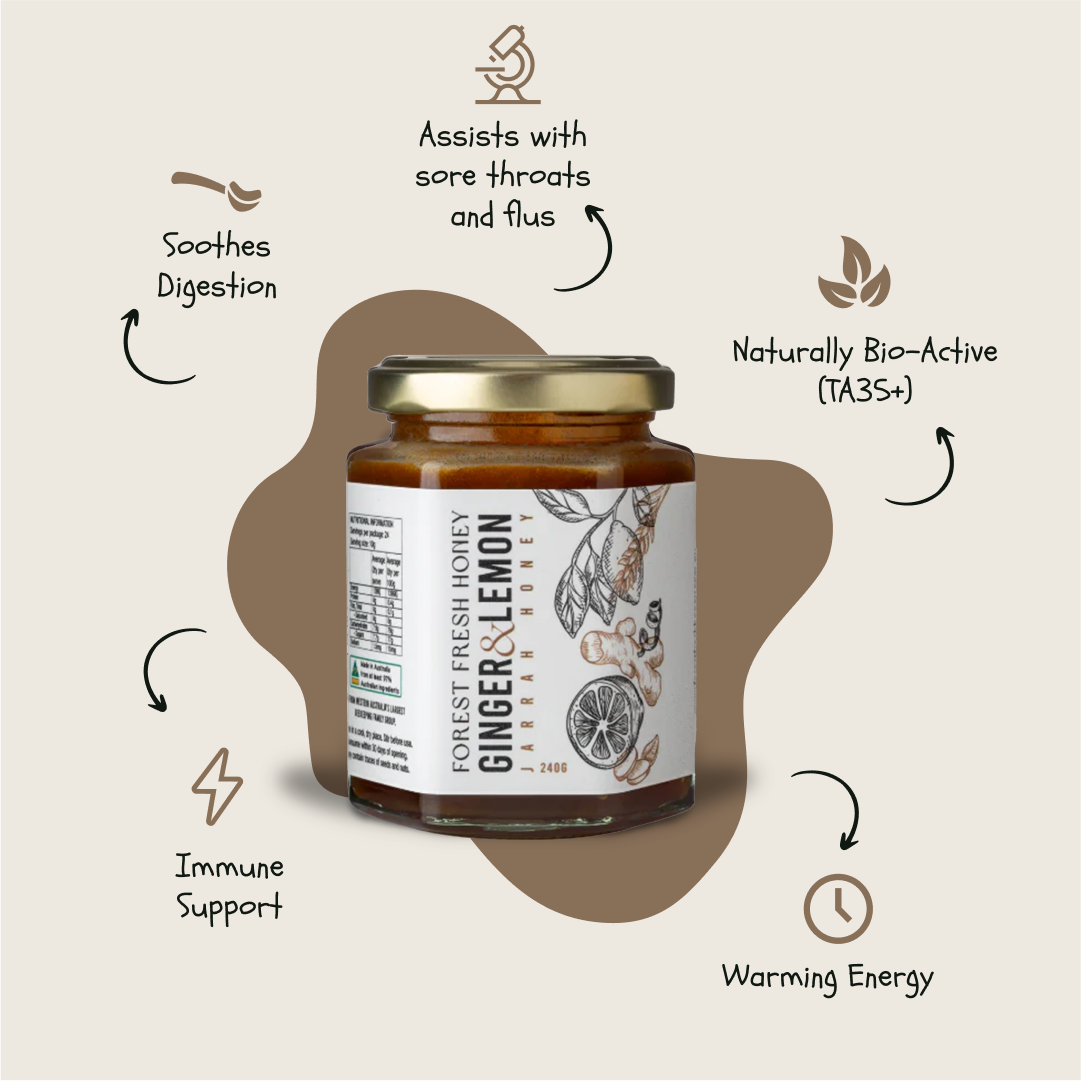
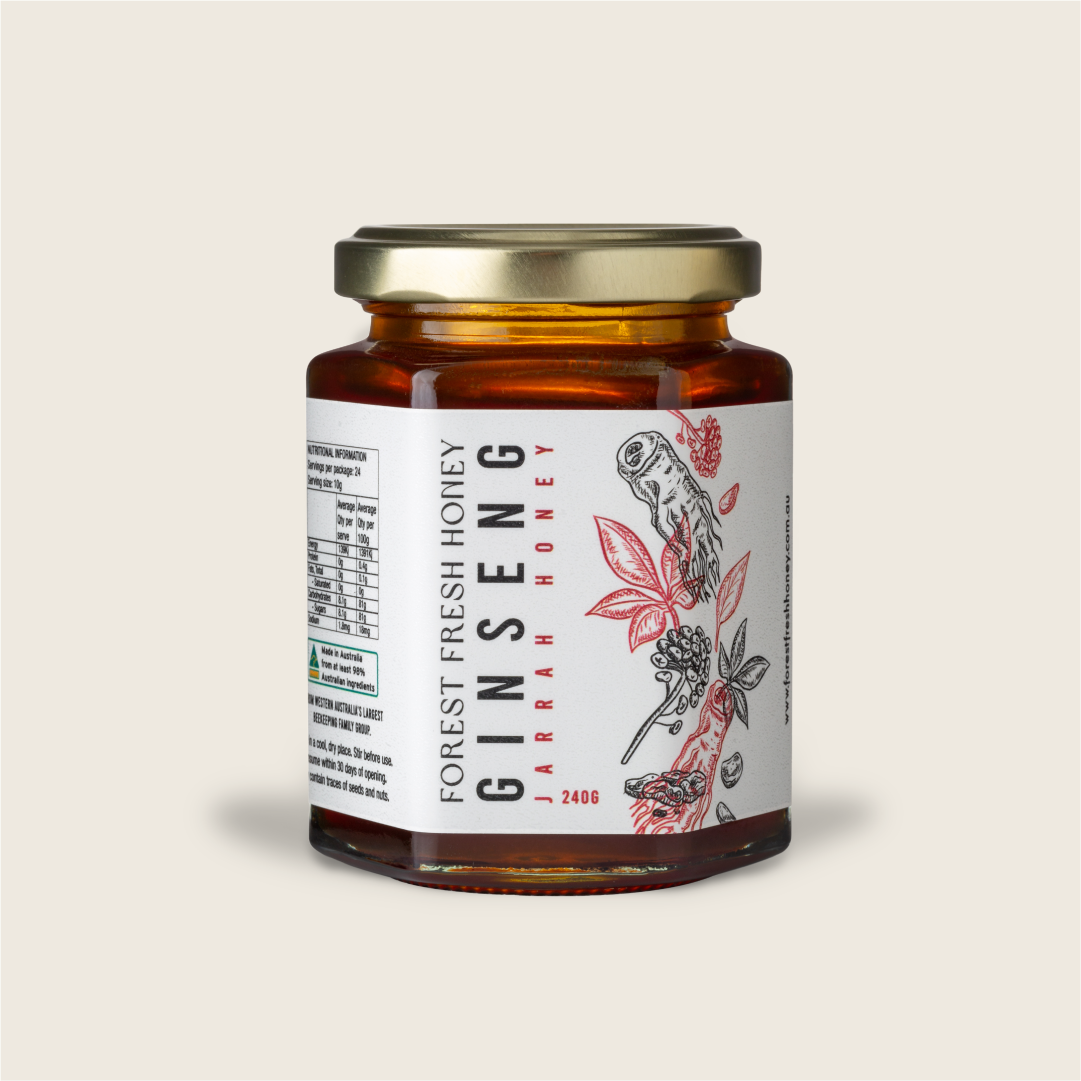
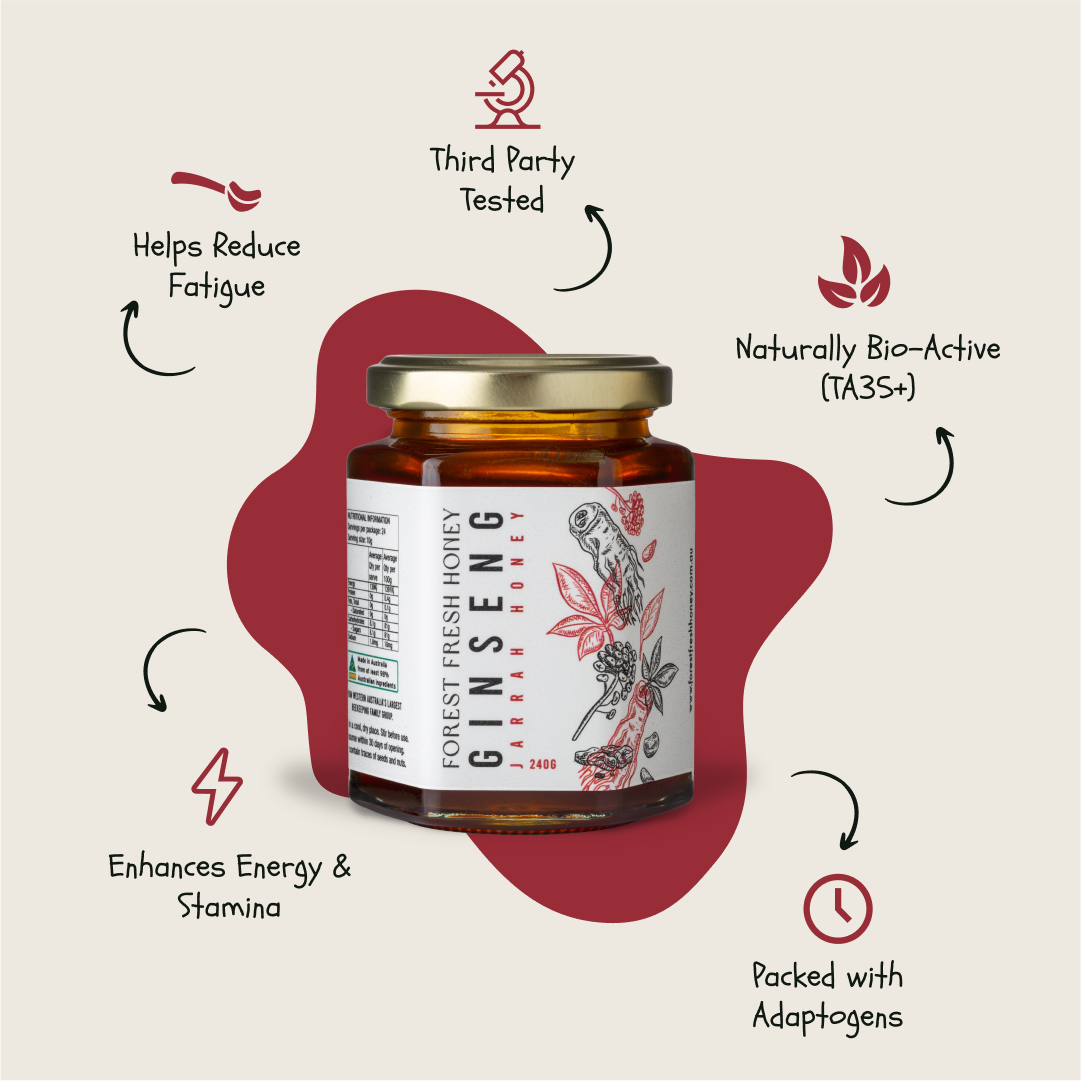
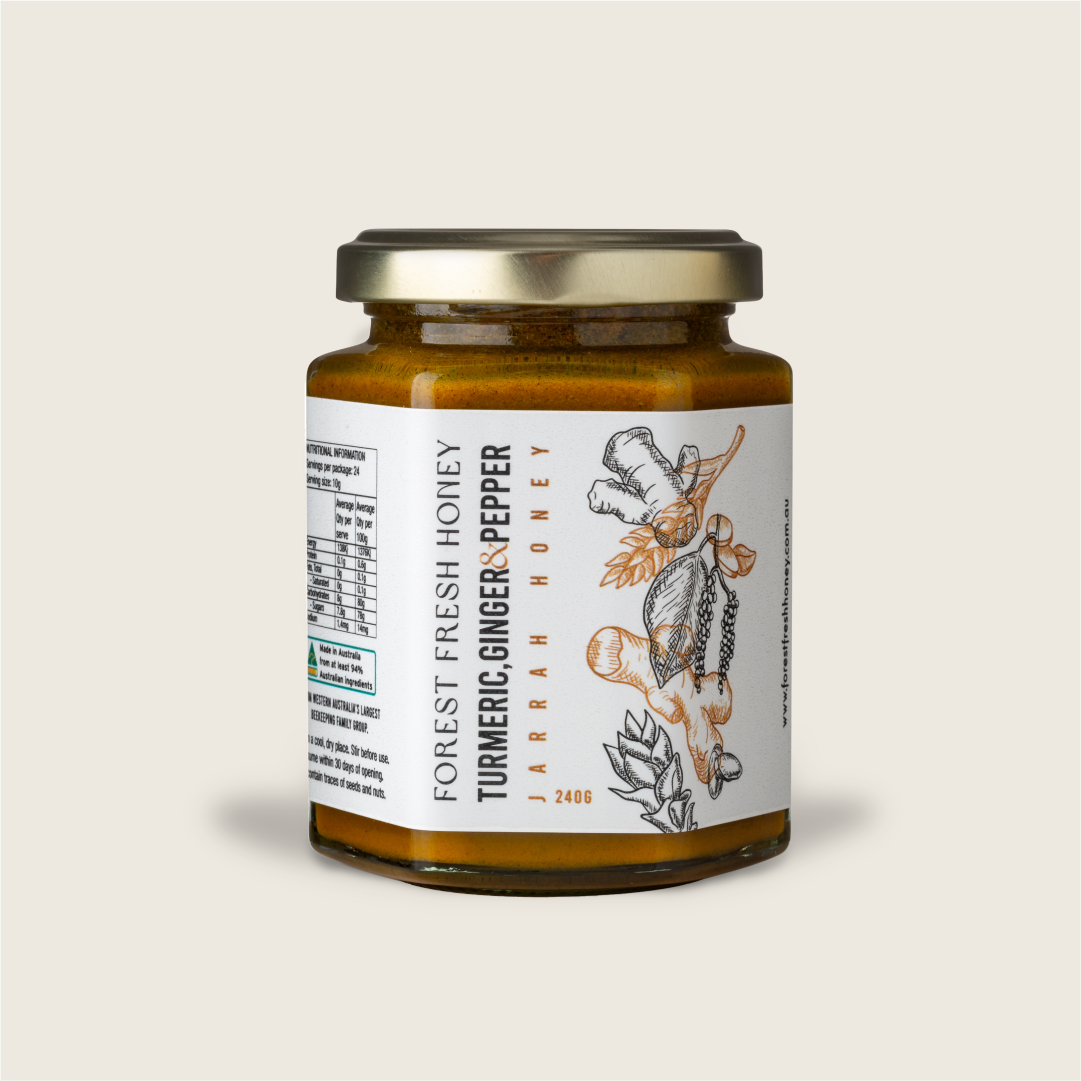
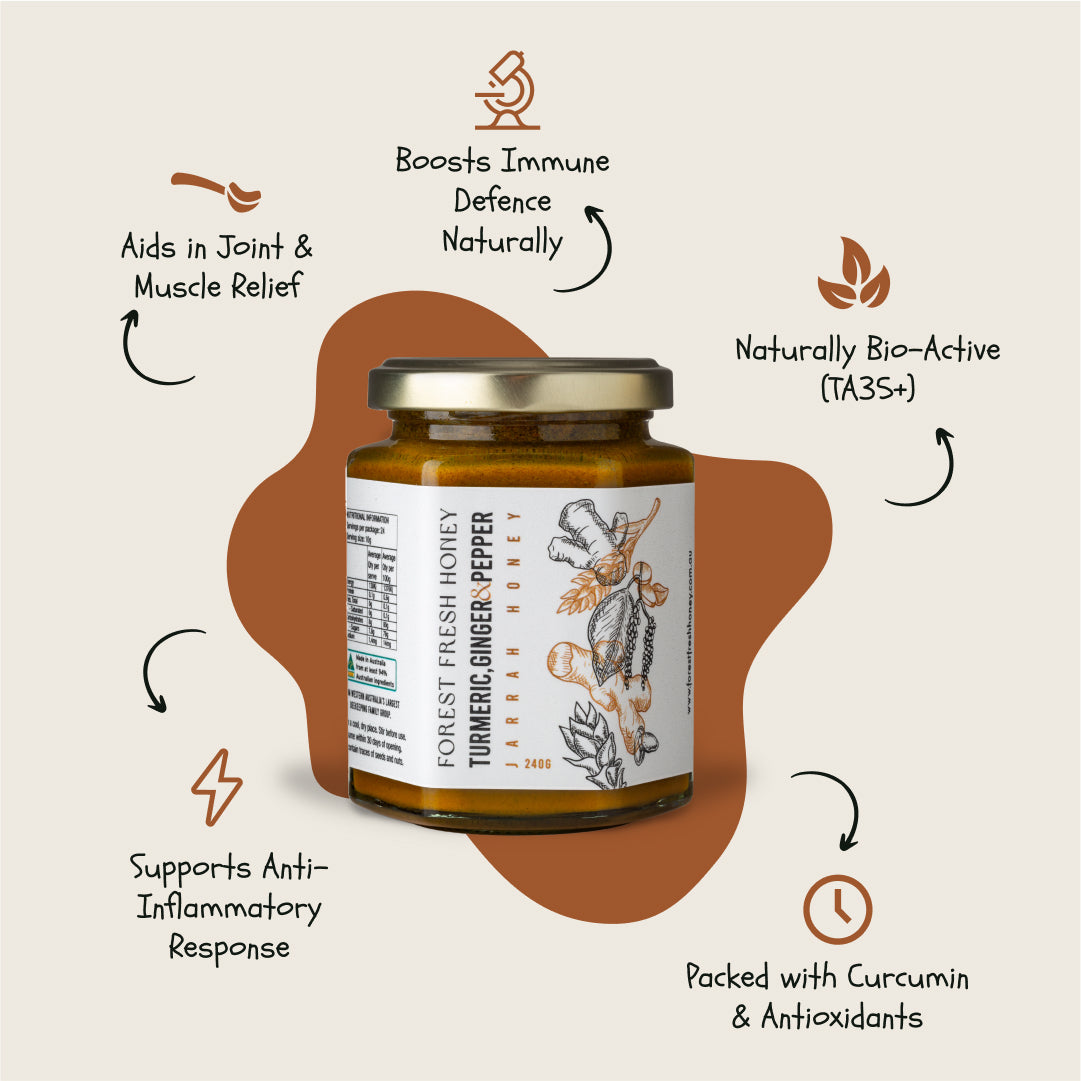
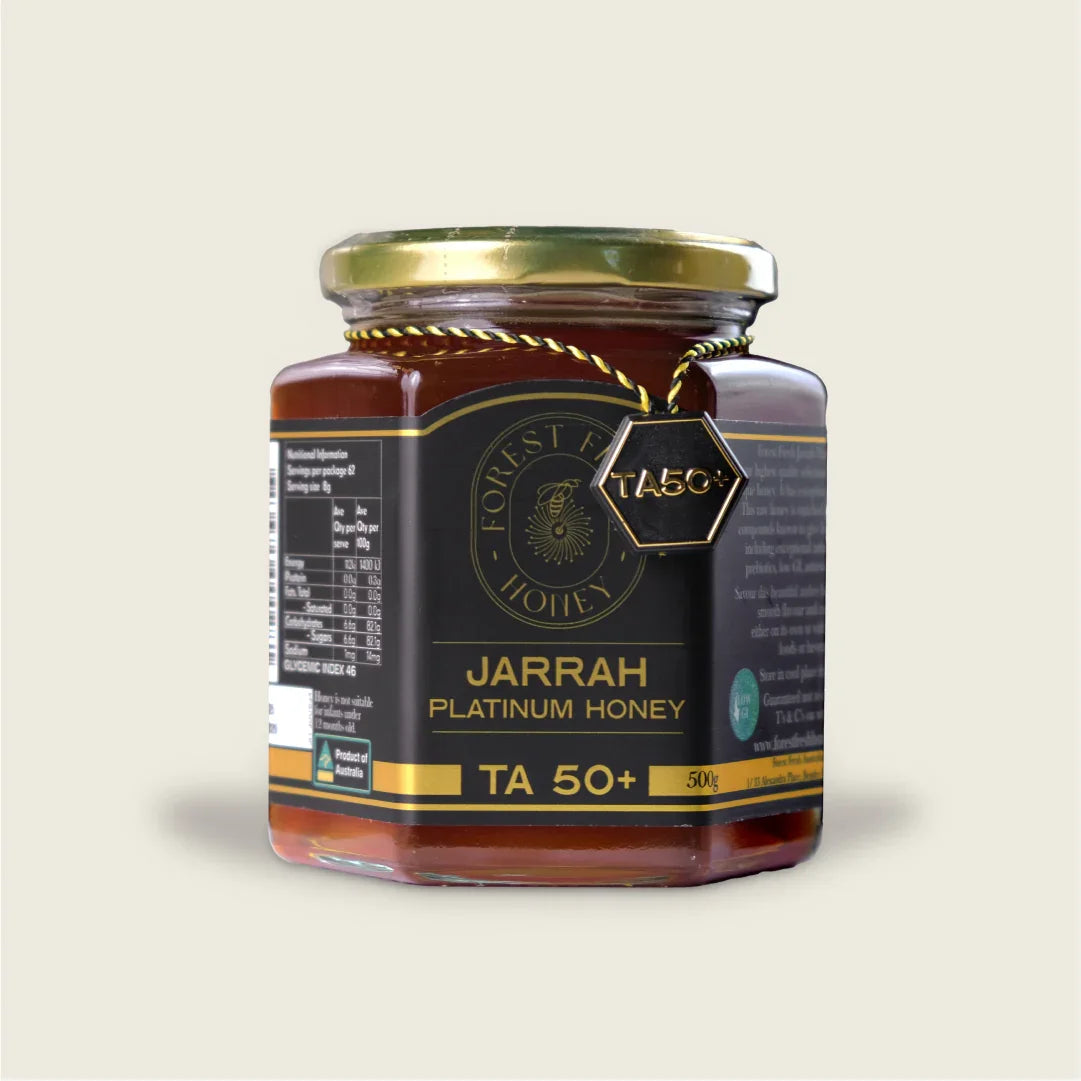
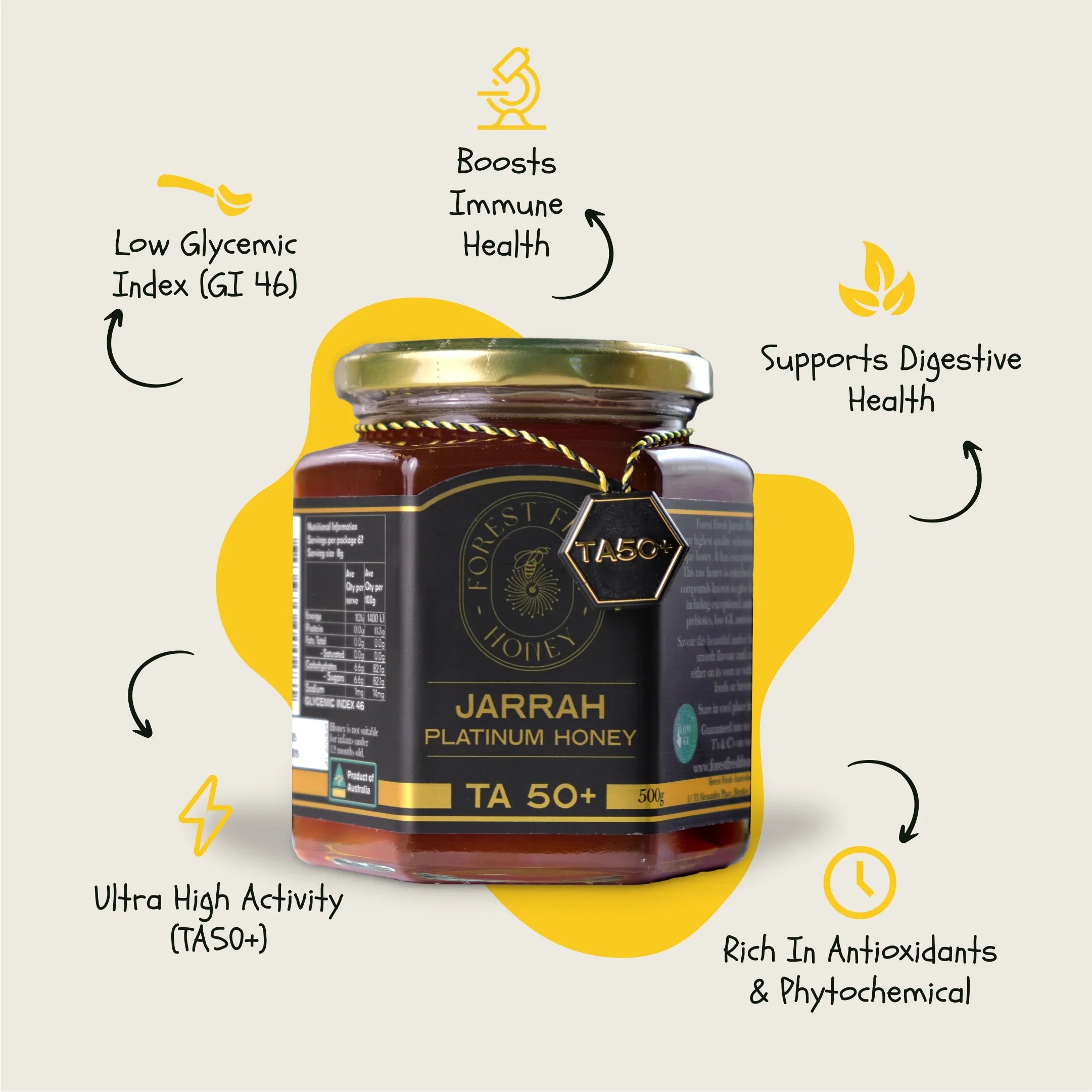
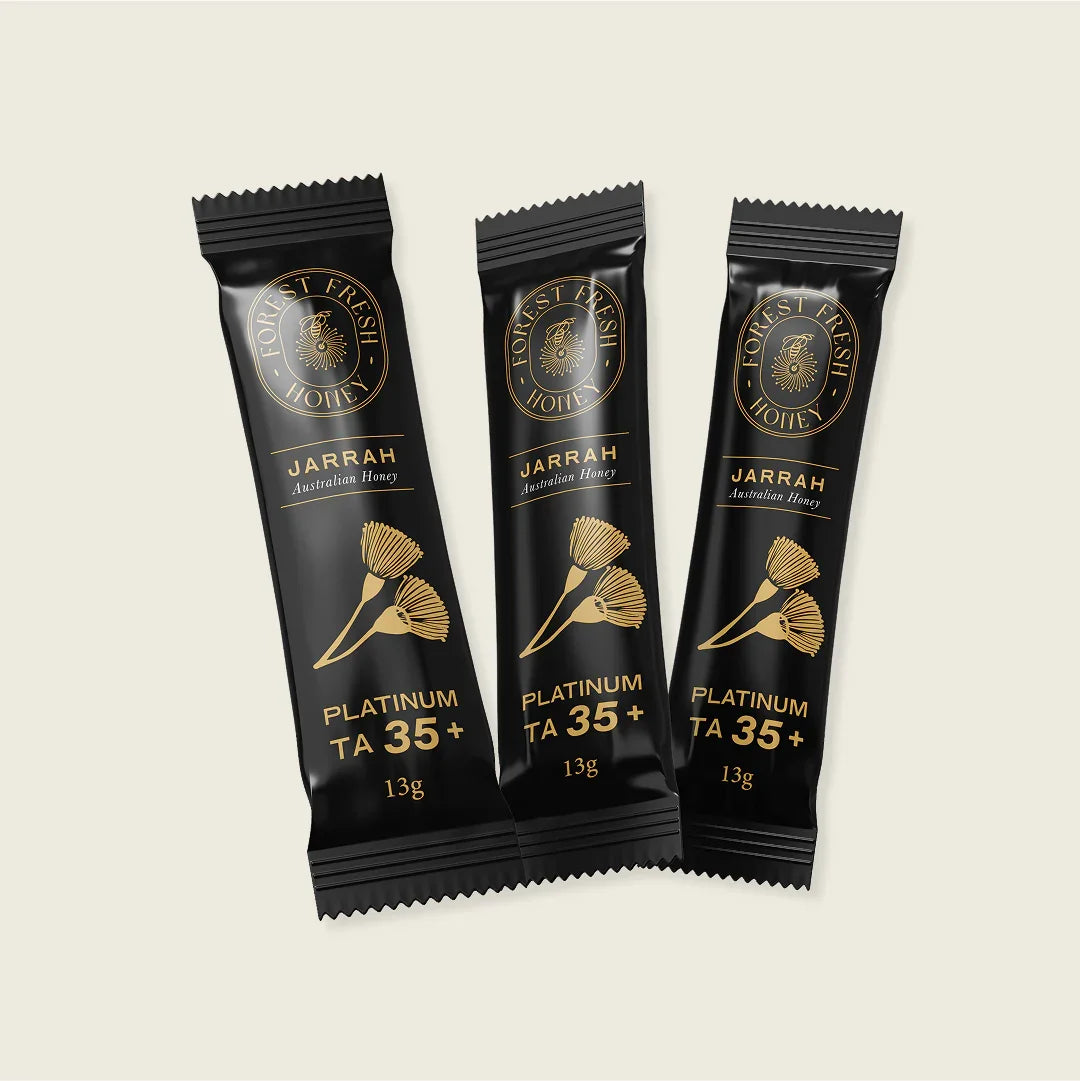
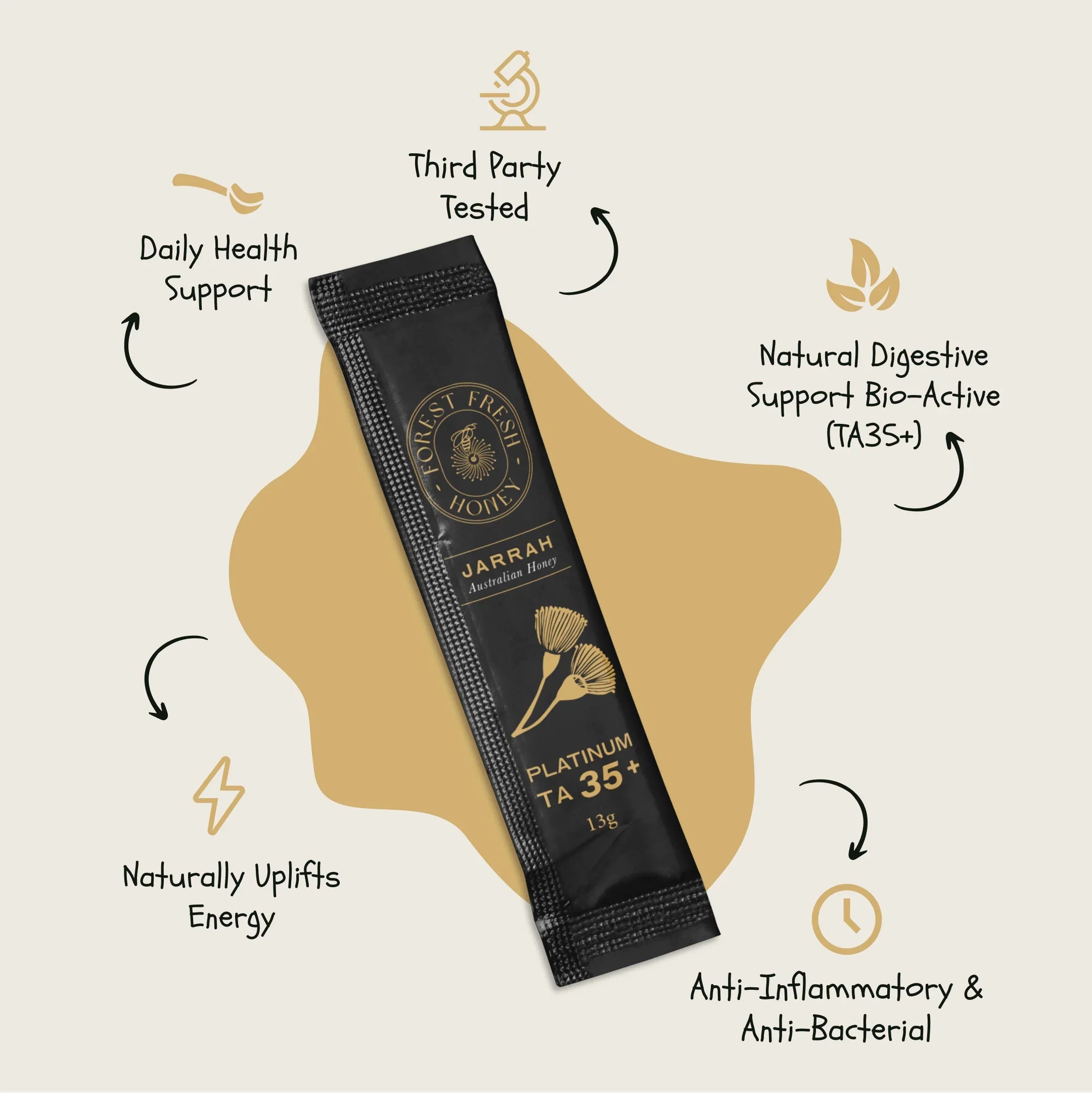
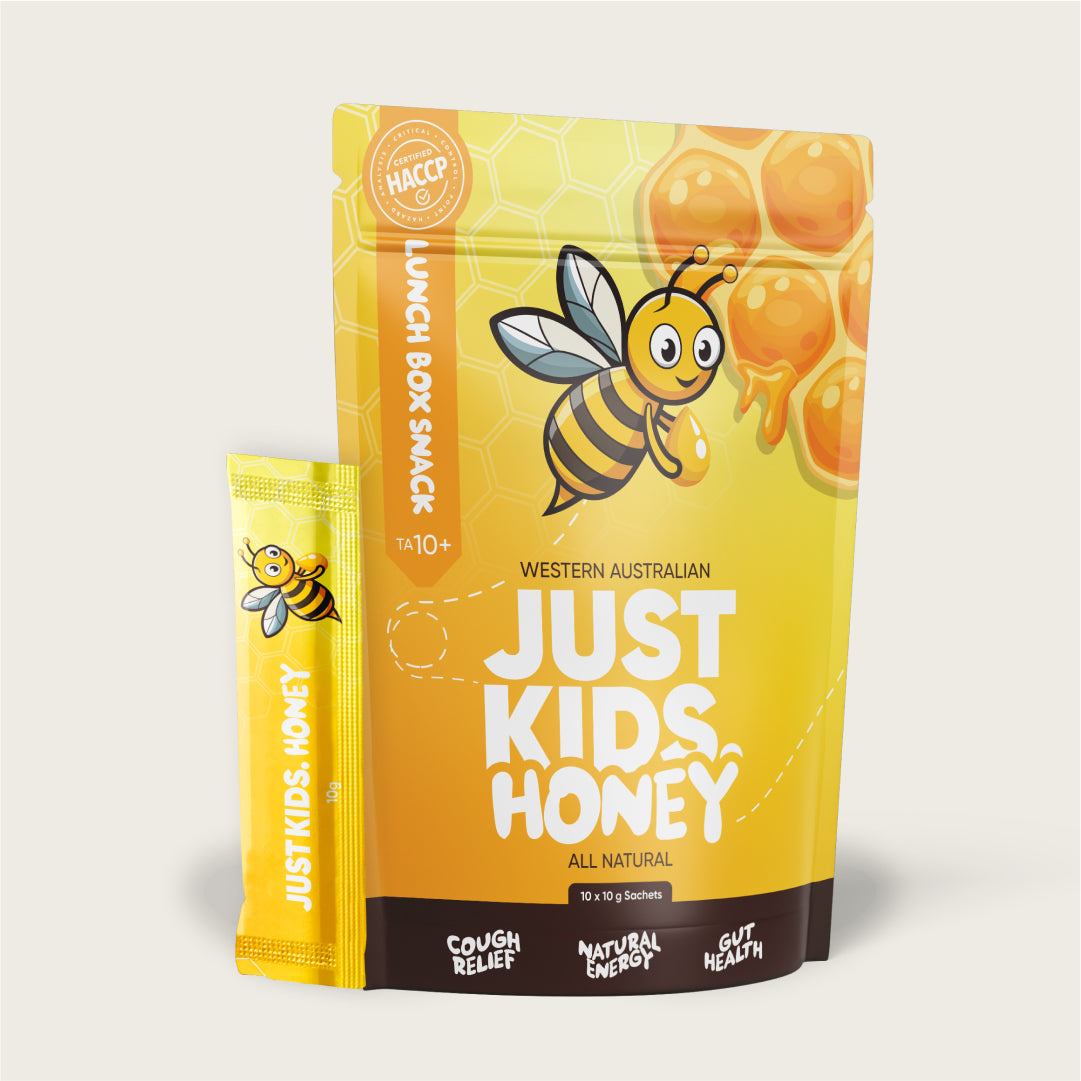
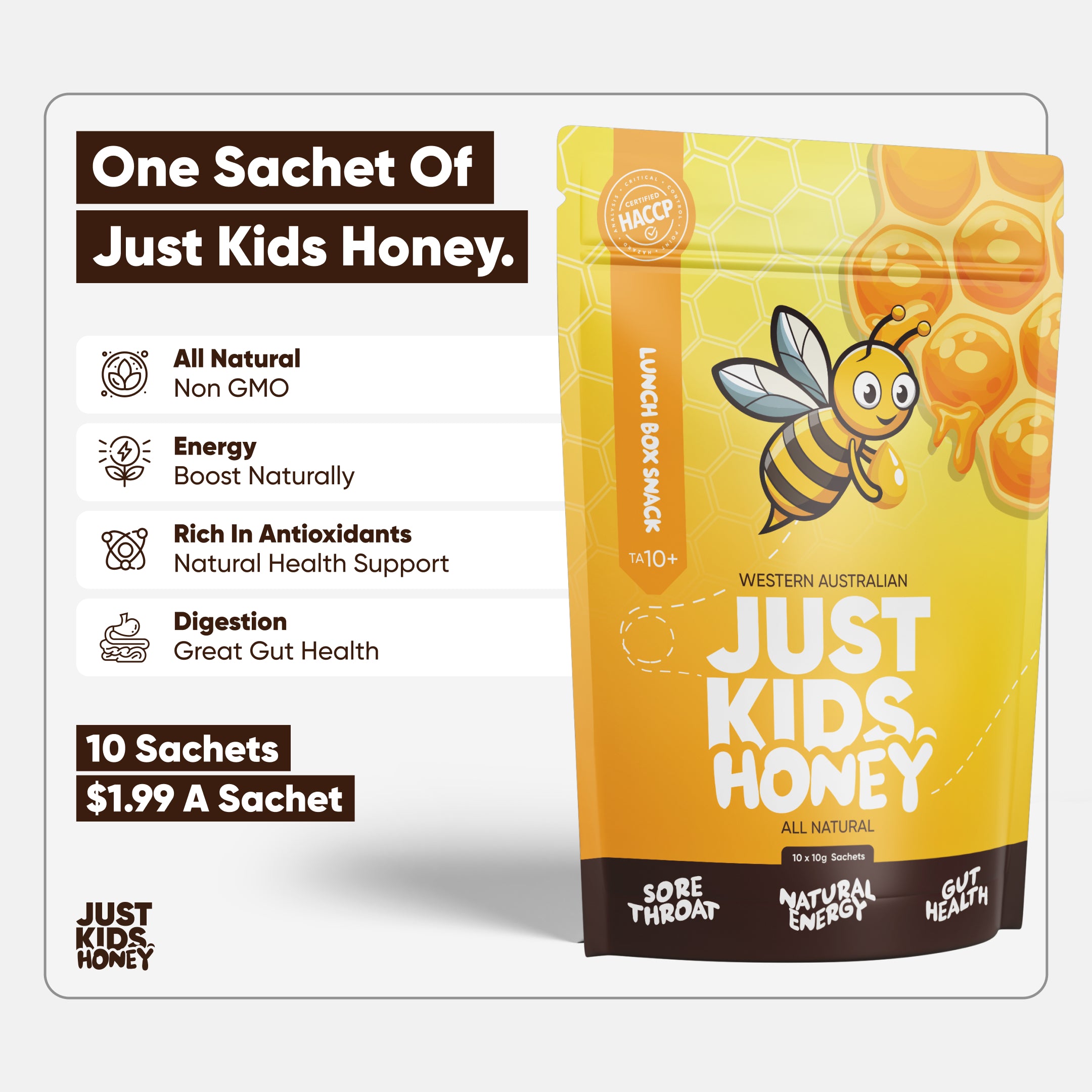
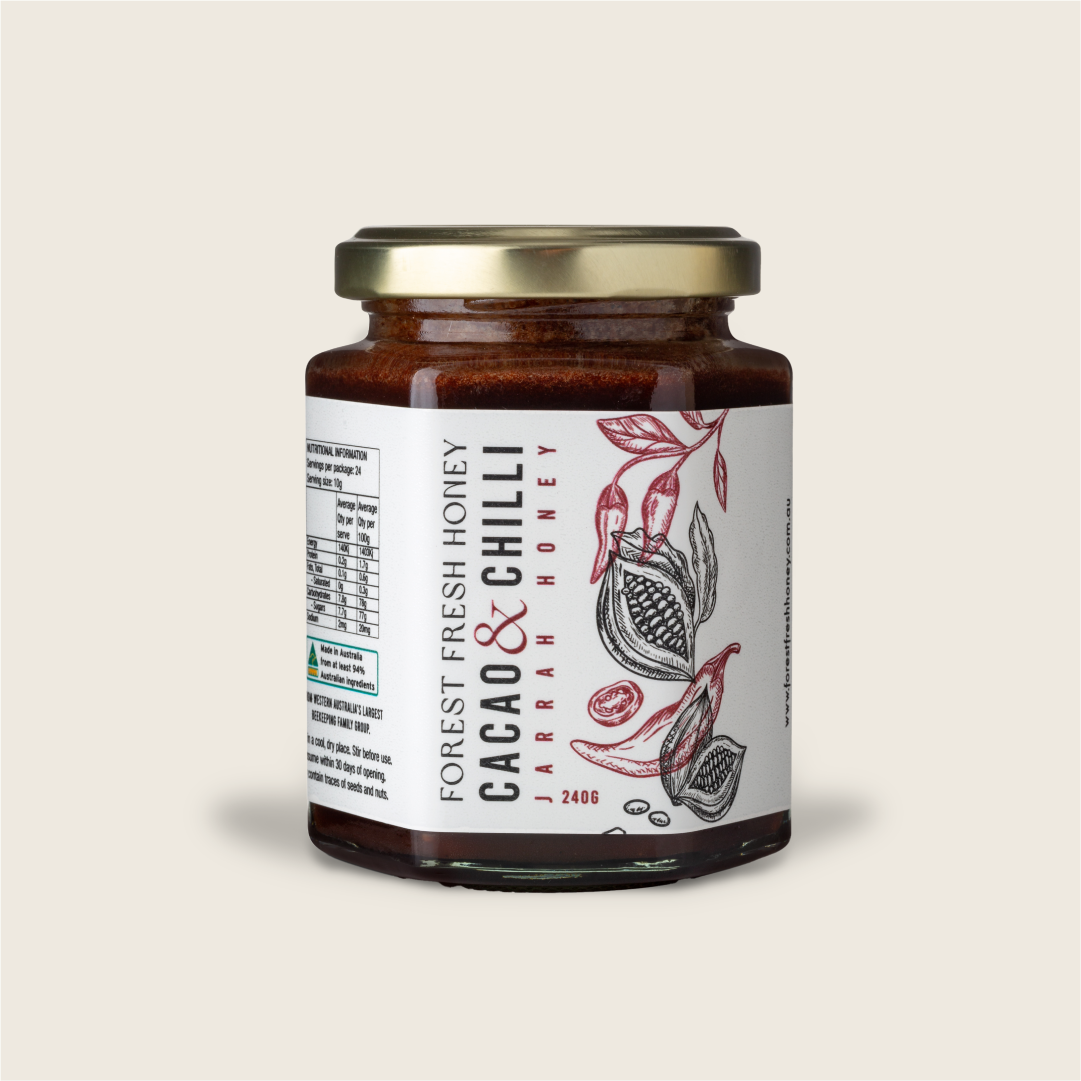
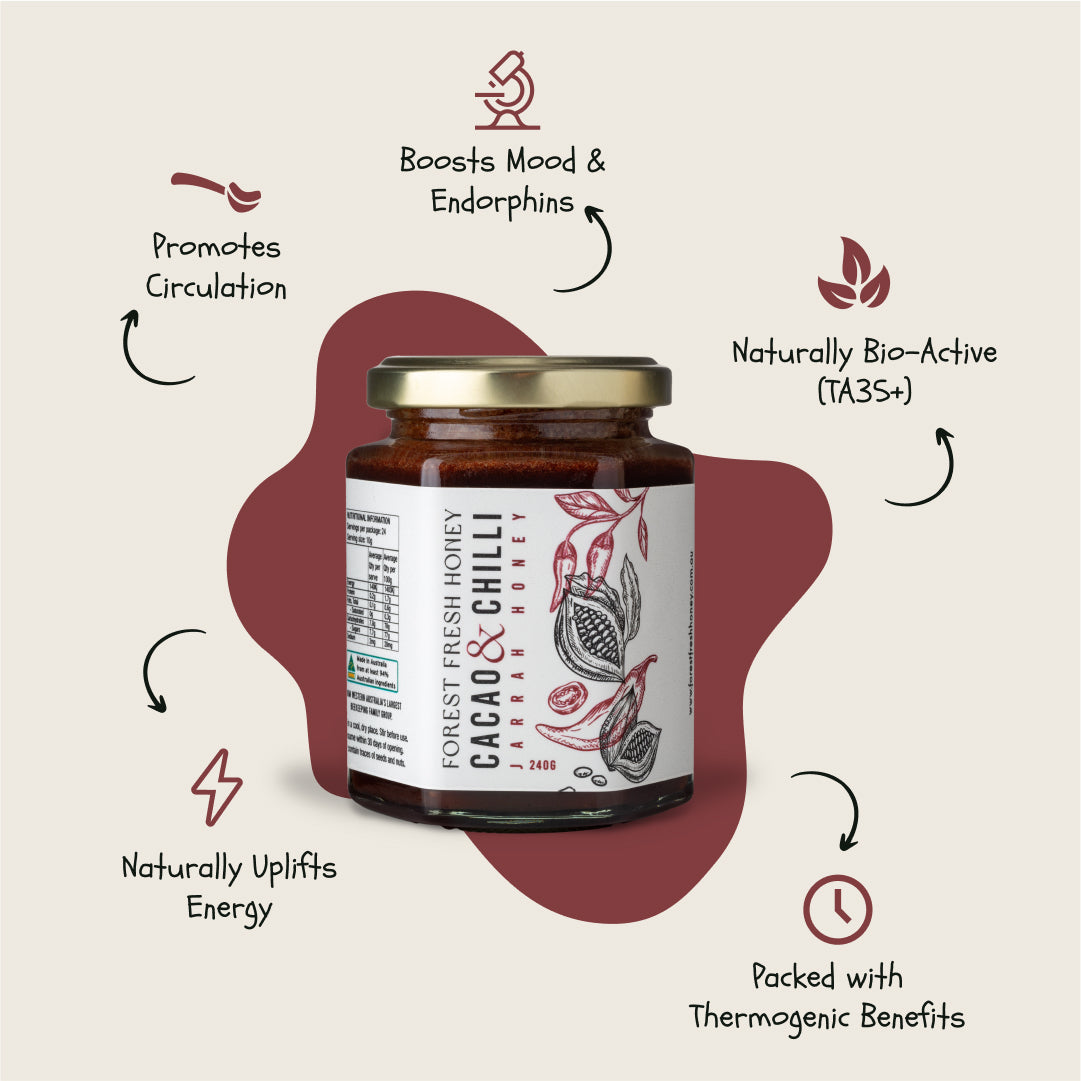
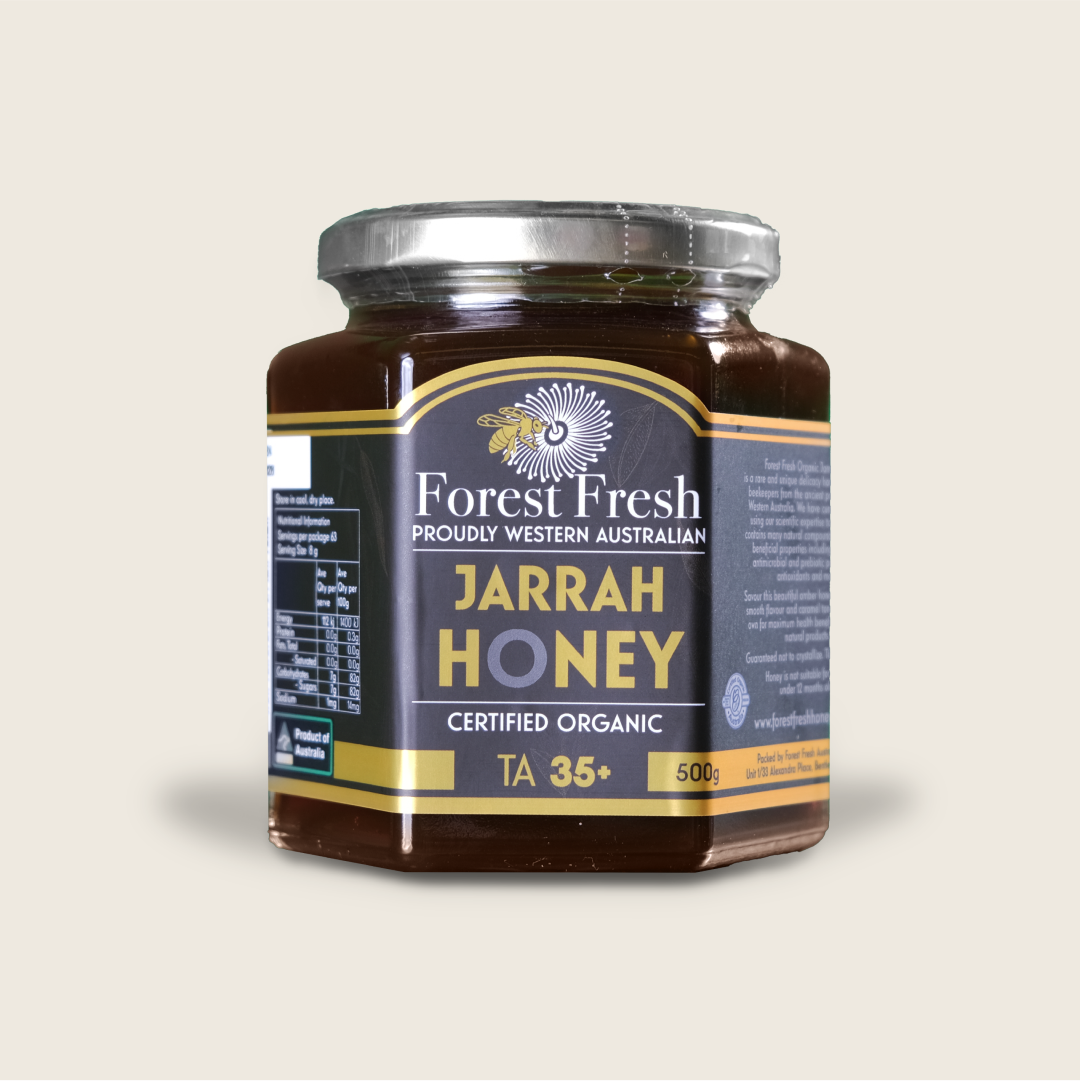
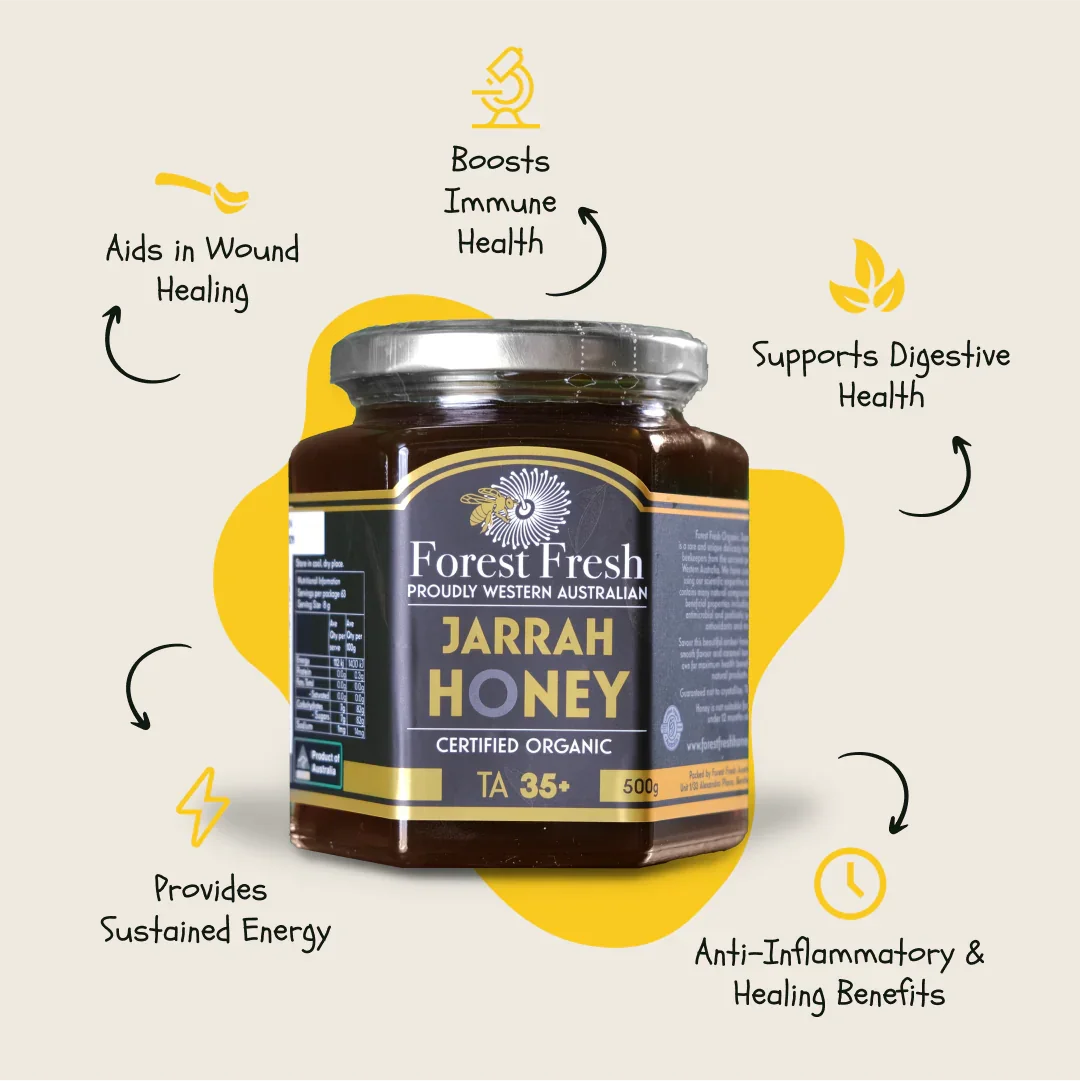
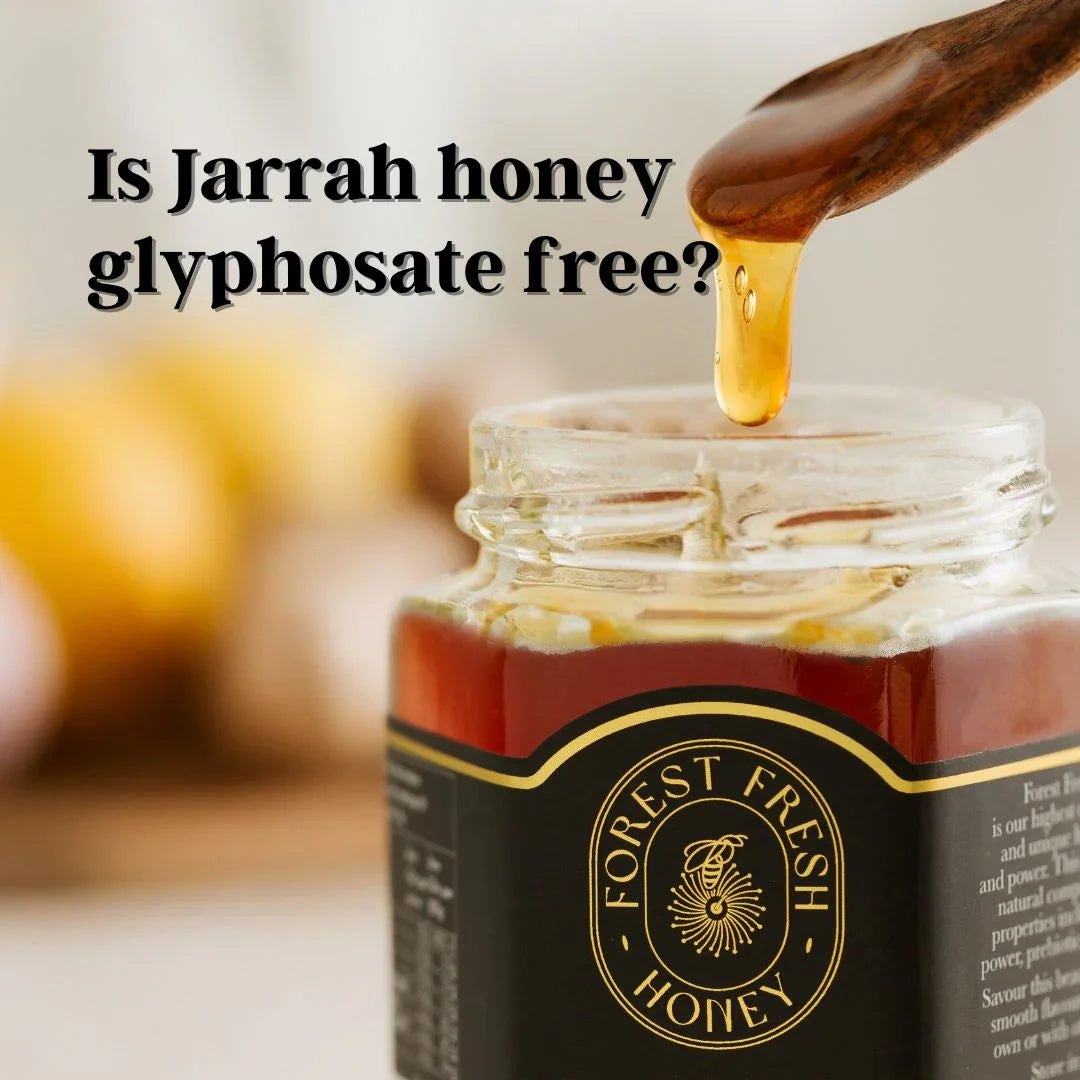
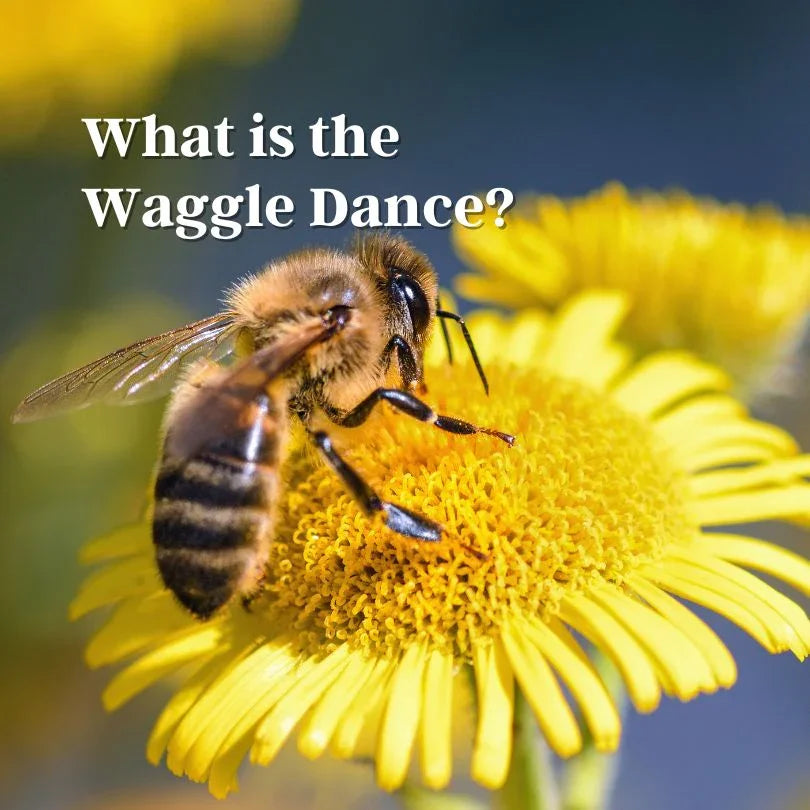
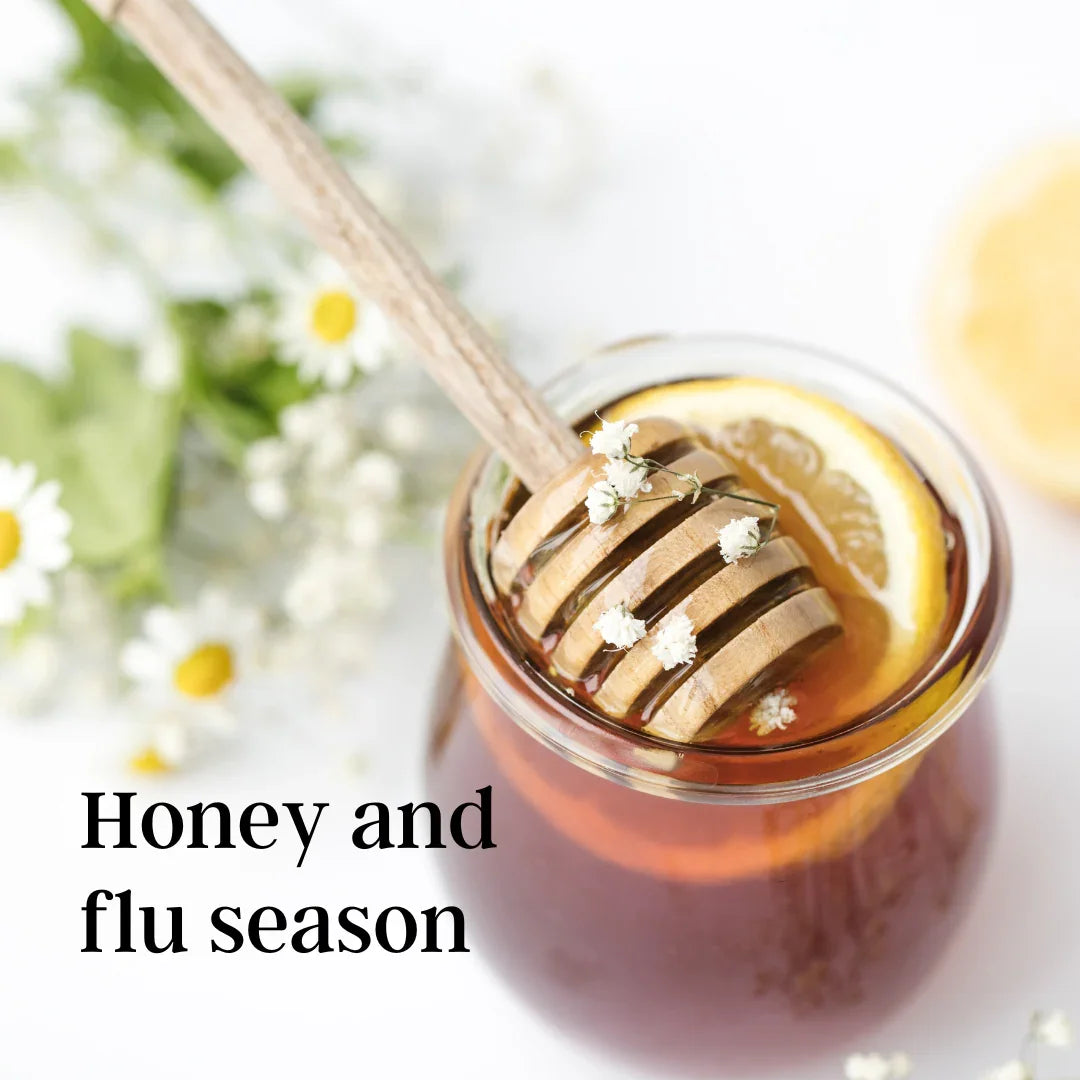
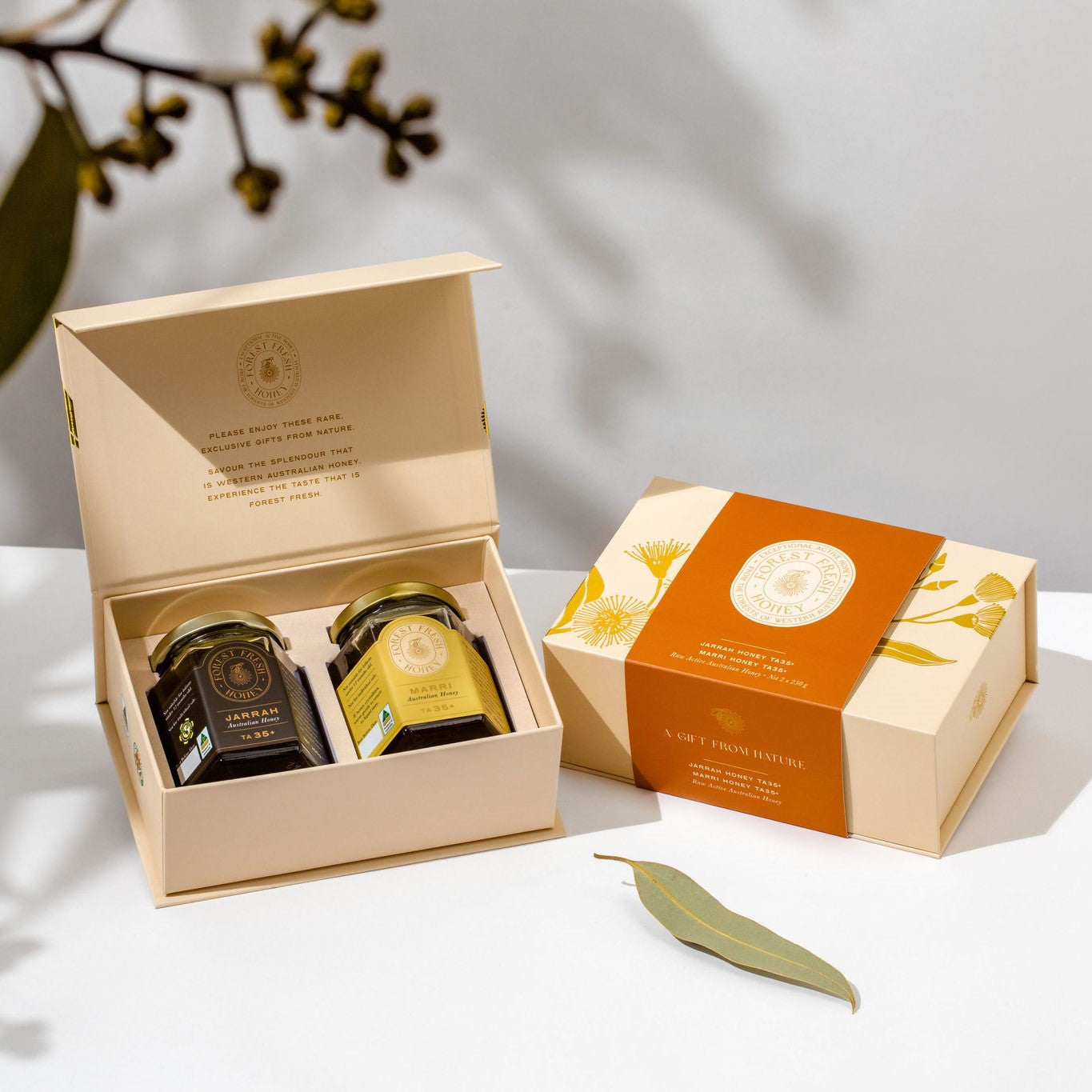
1 Comment
Hey guys , is it possible to source propolis from you ?